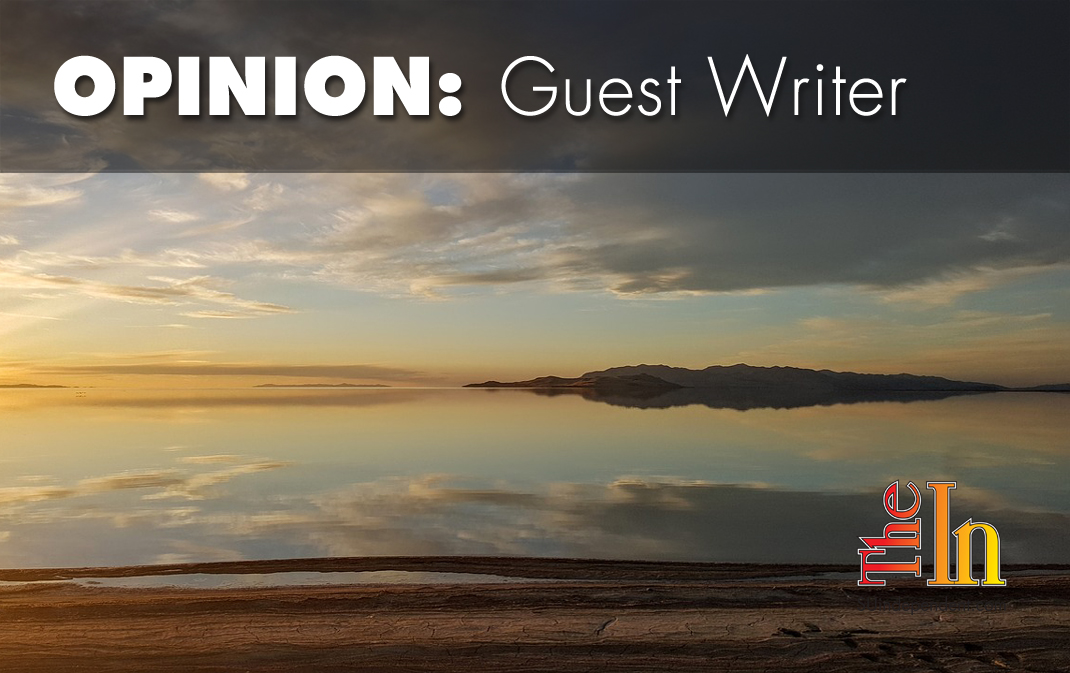
What’s at stake for Utah Lake?
By Isabelle Galland
Utah Lake is no stranger to harmful algae blooms. These toxic, smelly cyanobacteria have made headlines as they have become more rampant in the past few years and made hundreds of people sick, not to mention the environmental devastation they have caused to the lake itself.
But with this notoriety, why have we not seen any changes in harmful algae blooms?
Shockingly, there is very little being done to minimize the repercussions that these harmful algae blooms have on Utah Lake. In fact, there is even a privately funded Utah Lake Restoration Projec” in the works that even plans to develop islands smack in the middle of Utah Lake made of dredged sediments that you will be able to purchase waterfront homes on.
A further look into the issue shows it is far more convoluted than we know.
Harmful algae blooms are toxic cyanobacteria that congregate on the surface of the water and feed off different nutrients, most notably phosphorus. Harmful algae bloom formation is caused by nutrient pollution, which acts as a catalyst for these naturally occurring cyanobacteria to grow rapidly. This consequently creates algae that produce cyanotoxins with the potential to kill humans and other animals.
That being said, harmful algae blooms are a devastating environmental issue for Utah Lake that can destroy ecosystems, animal populations, and recreation accessibility.
However, efforts to negate the problem by environmental agencies here in Utah seem minimal at best. I spoke with environmental scientists for the Utah Department of Agriculture and Food. When asked about current or potential research of the harmful algae bloom problem in Utah Lake, they stated, “There is little funding for these projects and few principal investigators interested in doing the work for tiny pots of funding. We have started some initial discussions with the EPA about conducting the kind of research that we would need, but it is far too early to know whether they are interested or not yet.”
I also spoke to Benjamin Holcomb, who is the coordinator of harmful algal bloom programs for the Utah Division of Water Quality and told me about a study that the Utah Department of Water Quality did in 2007 showing that the biggest contributor to phosphorus input into Utah Lake was wastewater treatment plants — and not actually from fertilizer runoff, as the public has been taught since this problem first arose.
The Utah Lake Restoration Project could be a viable solution as its website shows plans to implement new treatment facilities around Utah Lake. However, the Provo wastewater treatment facility near Utah Lake is in the process of renovations due to the Utah Water Quality Board adopting a new rule in 2015 stating that wastewater treatment facilities can only output 1 milligram of phosphorus per liter of water.
The Provo treatment facility currently outputs 2 to 3 milligrams of phosphorus per liter. This facility is aging and in desperate need of upgrades to adhere to the new environmental standards, but these come at a massive cost. In 2017, the city of Provo asked for a grant of variance to the deadline for these phosphorus output limits to be implemented, stating, “Such improvements cannot be completed prior to January 1, 2020, despite Provo’s diligence.”
With this many complications to upgrading the old wastewater treatment plant, why would the privately funded Utah Lake Restoration Project not work with Provo to create a new, environmentally safe treatment plant to begin restoration of Utah Lake?
The viewpoints expressed above are those of the author and do not necessarily reflect those of The Independent.
How to submit an article, guest opinion piece, or letter to the editor to The Independent
Do you have something to say? Want your voice to be heard by thousands of readers? Send The Independent your letter to the editor or guest opinion piece. All submissions will be considered for publication by our editorial staff. If your letter or editorial is accepted, it will run on suindependent.com, and we’ll promote it through all of our social media channels. We may even decide to include it in our monthly print edition. Just follow our simple submission guidelines and make your voice heard:
—Submissions should be between 300 and 1,500 words.
—Submissions must be sent to editor@infowest.com as a .doc, .docx, .txt, or .rtf file.
—The subject line of the email containing your submission should read “Letter to the editor.”
—Attach your name to both the email and the document file (we don’t run anonymous letters).
—If you have a photo or image you’d like us to use and it’s in .jpg format, at least 1200 X 754 pixels large, and your intellectual property (you own the copyright), feel free to attach it as well, though we reserve the right to choose a different image.
—If you are on Twitter and would like a shout-out when your piece or letter is published, include that in your correspondence and we’ll give you a mention at the time of publication.
Articles related to “What’s at stake for Utah Lake?”
Our Geological Wonderland: Quail Lake and the Virgin Anticline
Utah Records Committee orders Mike Noel’s agency to provide Lake Powell Pipeline records to public



